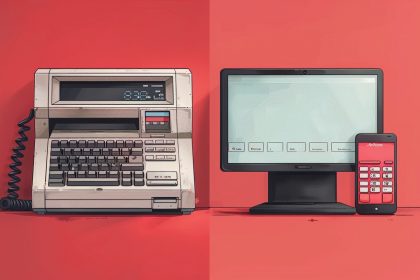Progress never stands still, impacting a wide range of industries. The manufacturing sector, for example, has undergone significant changes since the Industrial Revolution, evolving from machine production to automated assembly lines and, more recently, breakthroughs like artificial intelligence (AI). In the 21st century, new technologies continue to transform manufacturing, improving both efficiency and precision.
A simple scanning process, once limited to basic document handling tasks, has now advanced into powerful 3D scanners for industrial use, thanks to tools like the scanner.biz. Today, this cutting-edge technology is revolutionizing the way components are designed, inspected, and produced. 3D scanning has become a true game-changer and will continue to shape the future of the industry.
What is 3D scanning and why does it matter in manufacturing?
3D scanning involves digitizing a physical object, capturing its dimensions and details, and creating a 3D model. This process can use various technologies like laser scanning, structured light, or photogrammetry to capture an object’s surface. From small machine parts to large infrastructure, objects of any size can be digitized. Compact, handheld 3D scanners make this process lightweight and versatile.
These digital models can be analyzed, modified, tested, and reproduced. In manufacturing, 3D scanning reduces costs and lead times while improving accuracy. When paired with CAD and CAM programs, it enables seamless reverse engineering, inspection, and quality control. Benefits of 3D scanning include:
- High precision: Captures parts and assemblies in high resolution with sub-millimeter accuracy, reducing errors and maintaining tolerances.
- Efficiency: Reduces manual measurement and inspection times, streamlining workflows.
- Cost savings: Eliminates the need for expensive prototypes and physical models.
- Improved product quality: Ensures better fit and finish through accurate scans.
In manufacturing, much depends on technology, and workers use various models, from document scanners, like those found at https://scanner.biz/reviews/best-free-scanner-apps/, to high-tech 3D scanners that create 3D models.

Applications of 3D scanning
- Reverse engineering: Manufacturers can iterate on existing designs, fabricate spare parts without documentation, or work with legacy components without manual measurements.
- Prototyping and design: High-resolution 3D models speed up the design process, reducing the time from concept to production. Some companies report 20x faster lead times in areas like packaging.
- Quality control: Scans can be quickly compared to CAD models, optimizing quality checks and reducing time to market.
- Custom and additive manufacturing: 3D scanning supports unique designs and enables the production of custom-made parts, often in ways traditional methods cannot achieve.
For example, a Swiss packaging company reduced the time to design chocolate wrappers from 20 hours to just one using a handheld 3D scanner. By scanning confectionery items, they now create custom-fit packaging faster and more cost-effectively. Similarly, Dodman Ltd digitized an entire factory floor in less than a day to reorganize machinery virtually, achieving significant savings in time and efficiency. Using 3D scanning with tools like SOLIDWORKS, they created a digital twin of their production line, ensuring proper fit and performance.
The future of 3D scanning in manufacturing
3D scanning has already transformed manufacturing by improving reliability, cutting costs, and speeding up processes. As the technology advances, its applications will expand and play a key role in driving innovation across industries. Incorporating 3D scanning into existing workflows will allow manufacturers to stay competitive and maximize their return on investment.
Looking ahead, the integration of artificial intelligence (AI) will further enhance 3D scanning with real-time data collection and predictive maintenance. As Industry 4.0 progresses, 3D scanning will become an essential tool in smart factories, solving bottlenecks and driving greater efficiency in manufacturing.
By adopting these advancements, manufacturers can position themselves at the forefront of innovation, harnessing the full potential of 3D scanning and shaping the future of industrial production.





